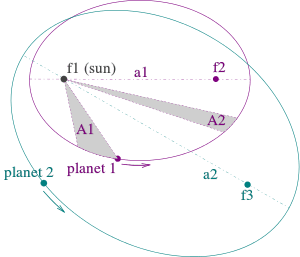
(Image from Wikimedia CC)
Einstein famously commented that the most unintelligible thing about the universe is its intelligibility. And his fellow Nobel laureate in physics, Eugene Wigner, wrote a well-known paper entitled “The Unreasonable Effectiveness of Mathematics in the Natural Sciences.”
The noted biochemist Lewis Thomas was fascinated when he discovered that every species of animal to appear in the paleontological strata, as well as all those living today, is perfect according to its kind. Every type is expertly suited to fly or run or swim, to reproduce, and to be nourished in remarkably effective ways—not more or less adapted, but perfectly so; not clumsy at first and then skilled; not more less beautiful, but entirely so. We do not find awkward and crippled species in transitional stages in the past or in the present. [Thomas Dubay, The Evidential Power of Beauty: Science and Theology Meet (San Francisco: Ignatius Press, 1999), 12-13]
Thomas: “I cannot make my peace with the randomness doctrine: I cannot abide the notion of purposelessness and blind chance in nature. And yet I do not know what to put in its place for the quieting of my mind. It is absurd to say that a place like this place is absurd, when it contains, in front of our eyes, so many billions [sic] of different forms of life, each one in its way perfect.” (Cited at Dubay, The Evidential Power of Beauty, 24)
Richard Feynman, Nobel laureate in physics for 1965: “You can recognize truth by its beauty and simplicity.”[(Richard Feynman, The Character of Physical Law (Cambridge: MIT Press, 1965), 171.
“All of the most eminent physicists of the twentieth century agree that beauty is the primary standard for scientific truth. . . . In physics, beautry reigns supreme.” [Robert Augros and George Stanciu, The New Story of Science (Lake Bluff, IL: Regnery Gateway, 1984), 39, 41]
If a lily were the only flower on earth, exhibits of it would be staged in major cities of the world, and long lines would form for the privilege of drinking in its exquisite artistry and splendor.” (Dubay, The Evidential Power of Beauty, 23)
Paul Dirac, Nobel laureate in physics for 1993, remarked that “It is more important to have beauty in one’s equations than to have them fit experiment.” (Cited in Augros and Stanciu, The New Story of Science, 40).
Murray Gell-Mann, 1969 Nobel laureate in physics: “Frequently, a theorist will throw out a lot of data on the grounds that if they don’t fit an elegant scheme, they’re wrong. That’s happened to me many times. The theory of weak interactions: there were nine experiments that contradicted it—all wrong. Every one. When you have something simple that agrees with all the rest of physics and really seems to explain what’s going on, a few experimental data against it are no objection whatever. Almost certain to be wrong.” (Cited in Augros and Stanciu, The New Story of Science, 41. Emphasis in original.)
Werner Heisenberg, Nobel laureate in physics for 1932: The truth of one of his positions in quantum mechanics “was immediately found convincing by virtue of its completeness and abstract beauty.” (Werner Heisenberg, “The Meaning of Beauty in the Exact Sciences,” Across the Frontier (New York: Harper and Row, 1974), 183)
Johannes Kepler described his work as an attempt at “thinking God’s thoughts after Him.”











